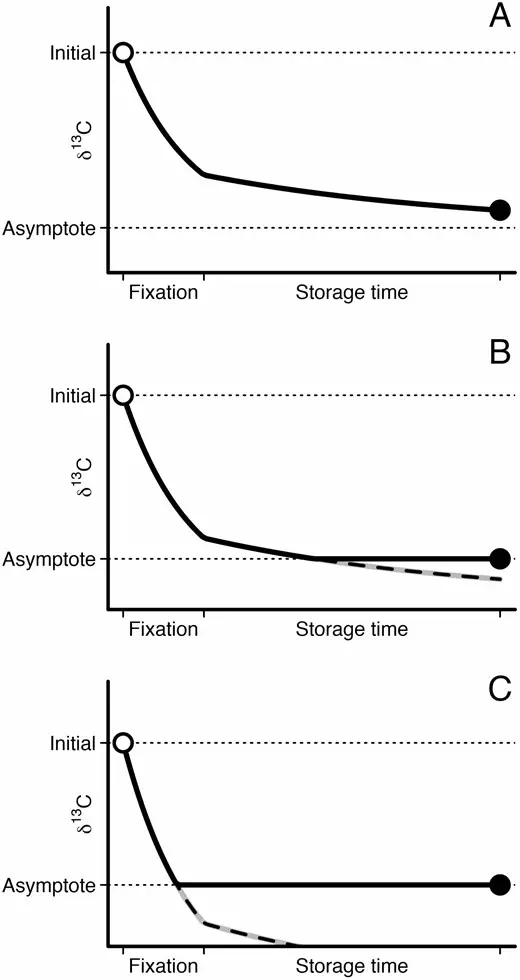The effects of formalin fixation and fluid storage on stable isotopes in rodent hair

Abstract
Stable isotopes are increasingly being used to unlock the wealth of information contained in specimens preserved in museum collections. However, preservation methods that employ formalin may confound ecological interpretations. To quantify the effects of formalin fixation and subsequent fluid storage in ethanol on the isotopic signatures of small mammal hair, we analyzed δ13C and δ15N values from specimens of seven rodent species that were sampled repeatedly both before and after varying lengths of formalin fixation (1 – 11 days) and ethanol storage (1 – 6 years). We supplemented these data with a two-week fixation experiment using deer mice (Peromyscus maniculatus) in which no ethanol storage was employed. As expected, preservation in formalin and ethanol had no discernable effect on δ15N values. In contrast, specimen δ13C values decreased in a saturating fashion during formalin fixation and over subsequent years of fluid storage in ethanol. On the basis of models that we fit to these time series, we estimate the long-term effect of fixation and storage on δ13C values to be -0.92‰ after 4 years. This biologically relevant shift in δ13C values should be accounted for when inferring the diets of species from fluid-stored museum collections and when comparing across specimens with different preservation histories.